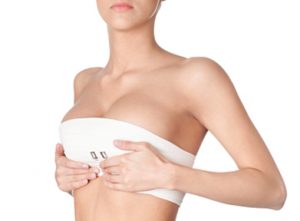Lymphedema Post Plastic Surgery
 The lymphatic system is a complex system that comprises a large network of lymphatic vessels. It plays an important role in the immune system and defends the body against foreign substances. When there is some kind of impairment in the functioning of this lymphatic system, the condition is known as lymphedema.
The lymphatic system is a complex system that comprises a large network of lymphatic vessels. It plays an important role in the immune system and defends the body against foreign substances. When there is some kind of impairment in the functioning of this lymphatic system, the condition is known as lymphedema.
Board certified female plastic surgeon Dr. Farah Naz Khan provides post plastic surgery lymphedema treatments to patients in Dallas, Texas, and surrounding locations.
Normal Function of Lymphatic System
Under normal conditions, the role of the lymphatic system is to collect the excess fluid from the space that separates the tissues. This fluid called lymph flows through the vessels of the lymphatic system when the surrounding muscles compress them. Lymph nodes at different positions act as filters to strain out the waste, bacteria and cell debris from the fluid which then drains into the bloodstream.
What is Lymphedema?
Lymphedema is a condition in which there is an unusual buildup of lymph that causes swelling of the extremities. This may arise due to a development defect and is called as primary lymphedema, or due to a blockage in lymph flow following surgery, which is known as secondary lymphedema.
Secondary lymphedema is commonly associated with breast surgery procedures such as mastectomy, lumpectomy, modified radical mastectomy with dissection of the axillary node and/or radiation therapy in a region with lymph nodes. It may also occur following a breast reduction or augmentation surgery that has been performed without precision.
Symptoms of Lymphedema
Some swelling during the first few weeks following surgery is to be expected. But swelling that fails to resolve over time or swelling that develops even many years after surgery may indicate lymphedema.
Swelling in the fingers, hands, arms, shoulders, and chest region is a typical symptom of lymphedema. Patients also experience tightness of the skin, a feeling of heaviness or fullness and reduced flexibility. Jewelry and clothes may start to give a sensation of a tighter fit in the trunk, chest, and arms.
Doctors perform a physical examination of the affected part of the body to confirm a diagnosis of lymphedema. They may also carry out an imaging technique called lymphoscintigraphy to identify the best treatment option.
CDT: A Preferred Treatment for Lymphedema
After a diagnosis of lymphedema is confirmed, the preferred mode of treatment is Complete Decongestive Therapy (CDT). This must be administered by a lymphedema therapist who is certified and has completed at least 135 hours of training.
CDT is a regimen that involves multiple components such as:
- Meticulous care of the skin to avoid infections
- Use of multilayered bandages or special garments for compression to control swelling
- Manual Lymphatic Drainage (MLD)
- Low intensity exercise done wearing the compression garments or bandages
Manual Lymphatic Drainage (MLD) Massage Treatment Post Surgery
The success of post-surgical advanced manual lymphatic drainage massage lies in its gentleness. Most experts believe that heat and deep massage are counterproductive in a post-surgical setting; thus, it is important that you NOT substitute deep tissue massage, Swedish massage, or other massage technique for this advanced treatment. Your specific treatment plan—including when to begin advanced MLD and how frequently you should receive treatments—will depend on the surgical procedure you had and your unique state of health.
Post-surgical MLD is an advanced technique requiring specialized training, and should only be performed by a licensed massage therapist. If you have had—or if you are planning to have—a mastectomy or a cosmetic procedure such as a facelift or liposuction.
Read more about post surgery massage for MLD.
Surgery for Lymphedema
In patients with severe lymphedema, doctors may recommend surgery to reduce the swelling by removal of excess tissue in the arm or leg regions. Other newer surgical techniques are also available such as lymph node transplants and lymphatic to venous anastomosis. Board certified female plastic surgeon Dr. Farah Naz Khan receives patients from Dallas, Texas, and nearby areas for lymphedema treatments.
Contact Board Certified Dallas Plastic Surgeon, Dr. Farah Khan to Schedule a Consultation
To schedule a consultation with Board Certified Dallas Plastic Surgeon, Dr. Farah Khan please call 469-437-5426 or click here to contact us.
Taking patients from in and around Dallas, Plano, Fort Worth, Grapevine, Garland, Mesquite, Carrollton, Irving, Frisco, Texas and more.

 Many women aspire for a round and more shapely posterior. They consider cosmetic surgery procedures for enhancing the proportions and contours of their rear. Butt implants and Brazilian butt lift are the two most common buttock enhancement procedures.
Many women aspire for a round and more shapely posterior. They consider cosmetic surgery procedures for enhancing the proportions and contours of their rear. Butt implants and Brazilian butt lift are the two most common buttock enhancement procedures. Sagging breasts make most women unhappy. Age and other factors can cause your breasts to lack volume and fullness. You can correct the size and shape of your breasts at the same time with a breast augmentation mastopexy procedure. Many women prefer getting the procedure done by a female plastic surgeon as it makes them feel more comfortable and confident.
Sagging breasts make most women unhappy. Age and other factors can cause your breasts to lack volume and fullness. You can correct the size and shape of your breasts at the same time with a breast augmentation mastopexy procedure. Many women prefer getting the procedure done by a female plastic surgeon as it makes them feel more comfortable and confident.